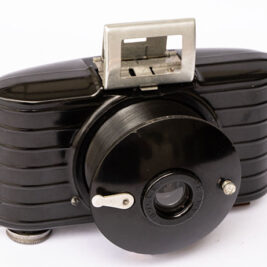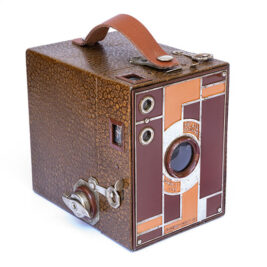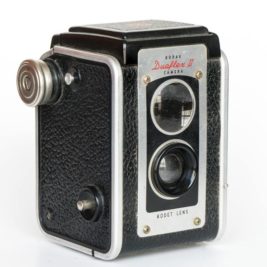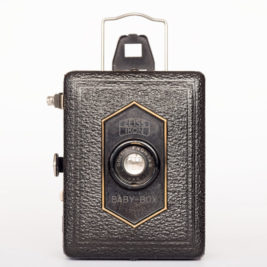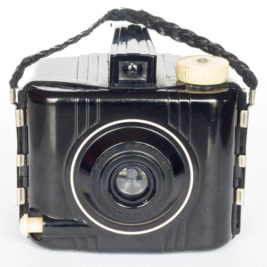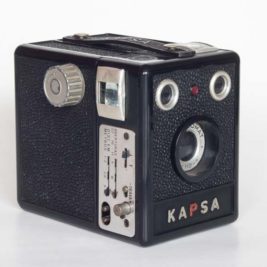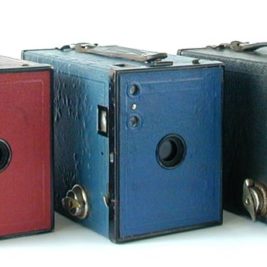With the Kodak Bullet Camera, designer Walter Dorwin Teague used the characteristics of bakelite to create one of the nicest cameras in the Art Deco style of the 1930s. It is a camera for the amateur, for photos that are unpretentious in terms of technique but full of affectionate memories.
box
Cameras shaped as a box with viewfinder with mirror and lens
Beau Brownie nº2 | Kodak
Among the hundreds, perhaps thousands, of camera models released by Kodak throughout its history, the Beau Brownie is part of a select group. This is the group of the first models in which aesthetics went hand in hand with functionality. It is a box camera from the 1930s, Art Deco style, very nice...
Duaflex II | Kodak
Bakelite camera manufactured by Kokak in the fifties. It uses 620 films that are no longer manufactured, but having two empty reels, it is possible to spool the film 120 with its own protective paper and markings, because internally the reels are compatible.
Baby Box Tengor | Zeiss Ikon
Small Zeiss Ikon camera from the 1930s. Uses 127 film and shoots in 3x4 cm format with Goerz's Frontar lens. A little princess from the box cameras' days.
Kodak Baby Brownie Special | Kodak
Popular camera marketed by Kodak between 1939 and 1954. It takes pictures 4.0 x 6.5 cm (1 5/8 X 2 1/2 ") using films 127. See camera review and photographs taken with it.
Kapsa | D. F. Vasconcelos
Brazilian photographic camera manufactured in the 1950s. Dedicated to amateur photography produces negatives with 6 x 9 cm or 4.5 x 6 cm in 120 films.
Brownie Camera Nº 2 | Kodak
– Brownie Camera Nº 2 | Kodak | 1901/1933 – Very special camera. The film 120 was introduced in the market for the Brownies! The same film that fits Super Ikontas, Rolleis, Hasselblads and so many other top cameras. The red one is in excellent condition and was a gift from a german friend who...
